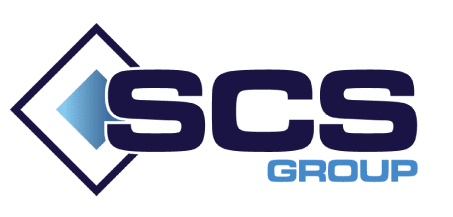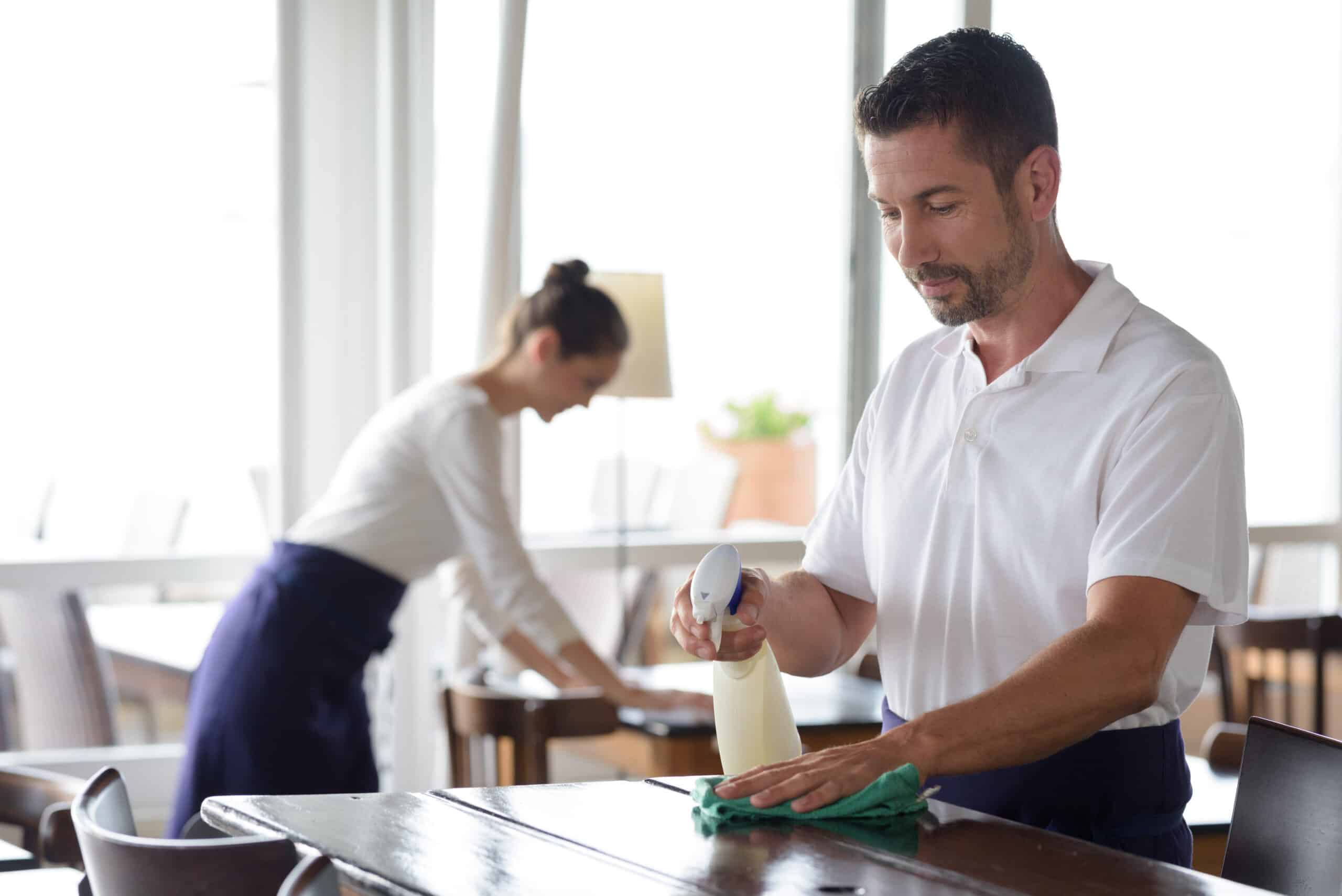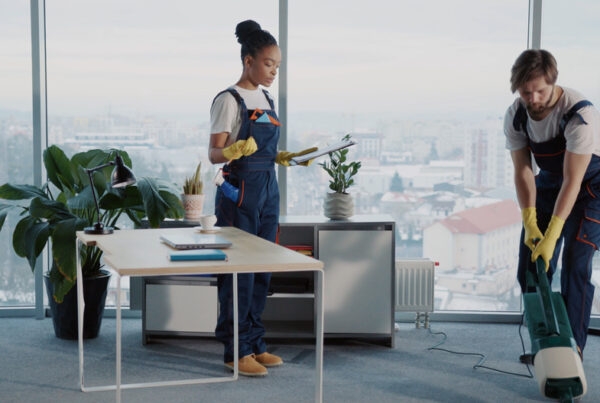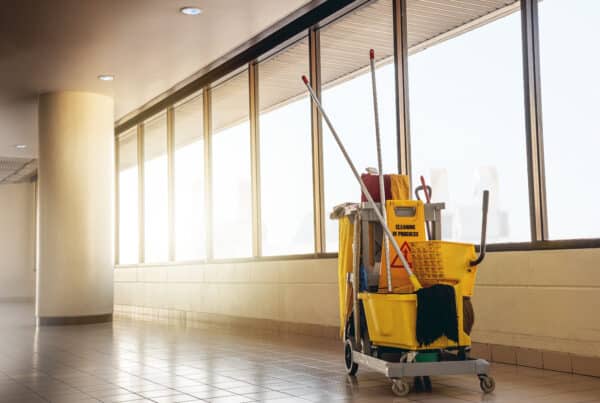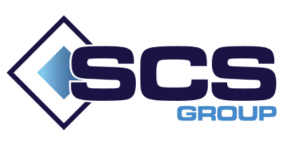Introduction:
Keeping a restaurant clean and sanitary is essential for both the health and satisfaction of customers. To achieve this, it's crucial to have a comprehensive restaurant cleaning checklist that covers all areas of the restaurant. In this blog post, we will provide a step-by-step guide to maintaining cleanliness in your restaurant. By following this checklist, you can ensure that every nook and cranny is attended to, creating a safe and welcoming environment for both guests and staff. Let's dive into the details of this comprehensive restaurant cleaning checklists.
Daily Restaurant Cleaning Checklist: Essential Tasks for a Pristine Environment
Front of The Restaurant Cleaning:
- Sweep or vacuum the floors in the dining area and entryway.
- Wipe down and sanitize dining tables and chairs.
- Clean and polish glass surfaces, including windows and display cases.
- Empty and clean trash bins in customer-accessible areas.
Back of The Restaurant Cleaning:
- Thoroughly clean and sanitize kitchen surfaces, such as countertops and prep tables.
- Clean cooking equipment, including stovetops, ovens, and grills.
- Wash and sanitize dishware, utensils, and cooking tools.
- Clean and disinfect sinks, drainboards, and dish racks.
Restroom Cleaning:
- Clean and sanitize toilets, urinals, sinks, and mirrors.
- Refill hand soap, paper towel, and toilet paper dispensers.
- Empty and sanitize trash bins.
- Mop the restroom floors with a suitable cleaner.
Floor Cleaning:
- Sweep or vacuum all floors, including dining areas, kitchens, and storage spaces.
- Mop and sanitize hard floors with a suitable cleaning solution.
- Spot clean any spills or stains promptly.
- Pay special attention to high-traffic areas.
Trash and Waste Management:
- Regularly empty and replace trash bags in all designated areas.
- Separate recyclable waste and dispose of it properly.
- Ensure the dumpster or trash area is clean and free from debris.
Equipment and Appliance Maintenance:
- Regularly clean and sanitize kitchen equipment, such as grills, fryers, and slicers.
- Clean and maintain refrigerators, freezers, and ice machines.
- Check and replace air filters as needed.
- Schedule professional maintenance for appliances as required.
General Cleaning:
- Dust and wipe down surfaces, including shelves, light fixtures, and decorative items.
- Clean and sanitize employee break areas and dining areas.
- Wipe down door handles and other high-touch surfaces.
- Regularly clean and disinfect POS systems and payment terminals.
Restaurant’s Dining Area Cleaning Checklist: Ensuring a Clean and Inviting Ambience
Maintaining a clean and inviting dining area is essential for providing a pleasant experience to restaurant guests. Here is a restaurant dining area professional cleaning checklist to help you ensure a clean and inviting ambience:
Clearing and Resetting Tables:
- Clear tables promptly after guests have left, removing all used dishes, glassware, and utensils.
- Wipe down tables and chairs to remove any food debris or spills.
- Reset tables with clean tablecloths, napkins, and table settings.
Sweeping and Vacuuming:
- Regularly sweep or vacuum the dining area floor to remove dirt, crumbs, and debris.
- Pay attention to corners, under tables, and high-traffic areas.
- Use a dustpan to collect any larger debris and dispose of it properly.
Mopping and Floor Care:
- Mop the dining area floor using a suitable cleaner to ensure cleanliness and remove any stains.
- Focus on areas prone to spills and stains, such as near the beverage stations or buffet areas.
- Pay attention to floor edges and baseboards, ensuring they are clean and free of dirt.
Spot Cleaning:
- Spot clean any stains or spills on walls, chairs, or upholstery using appropriate cleaning solutions.
- Check and clean any high chairs or booster seats for food debris or spills.
- Wipe down chair backs and seats to remove fingerprints or smudges.
Dusting and Wiping:
- Dust and wipe down all surfaces, including windowsills, ledges, and decorative items.
- Clean and polish any glass or mirrored surfaces to maintain a clear and attractive appearance.
- Remove any dust or cobwebs from corners or light fixtures.
Window Cleaning:
- Clean and polish windows to ensure a clear view and allow natural light to brighten the dining area.
- Wipe down window sills and ledges to remove any dirt or dust accumulation.
Trash and Recycling:
- Empty and replace trash bins regularly to prevent overflow and maintain cleanliness.
- Separate and dispose of recyclable items properly according to local regulations.
- Keep the trash storage area clean and well-organized.
High-Contact Areas:
- Pay special attention to high-contact areas such as door handles, handrails, and menu holders.
- Clean and sanitize these surfaces regularly to reduce the spread of germs and maintain hygiene.
Overall Inspection:
- Regularly inspect the dining area for any maintenance or repair needs, such as loose furniture or wobbly tables.
- Ensure that lighting is functioning properly, creating a warm and inviting ambience.
Train staff on the importance of maintaining a clean dining area and encourage them to report any issues promptly.
Commercial Kitchen Cleaning Checklist: Ensuring Food Safety and Hygiene Standards
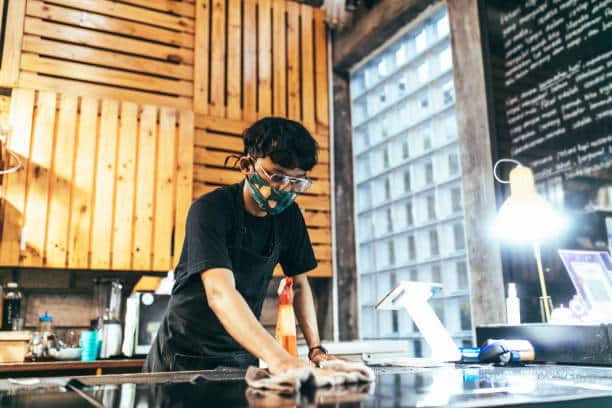
Surfaces and Equipment:
- Clean and sanitize countertops, cutting boards, and prep surfaces before and after each use.
- Wash and sanitize utensils, knives, and cooking tools.
- Clean and disinfect cooking equipment, including stovetops, ovens, grills, and fryers.
- Regularly clean and degrease ventilation hoods and filters.
Food Storage:
- Regularly organize and clean storage areas, including walk-in refrigerators, freezers, and dry storage.
- Check for expired or spoiled food items and dispose of them properly.
- Clean and sanitize food containers, bins, and shelves.
- Maintain proper temperature control in refrigeration units.
Dishwashing Area:
- Clean and sanitize sinks, drainboards, and dish racks regularly.
- Wash and sanitize dishware, glassware, utensils, and cooking equipment.
- Empty and clean the grease trap to prevent clogs and maintain proper drainage.
- Ensure a constant supply of hot water for effective dishwashing.
Floors and Drains:
- Sweep or vacuum the kitchen floor to remove loose dirt and debris.
- Mop the floor using a suitable cleaner and sanitize regularly.
- Clean and sanitize floor drains to prevent buildup and odors.
- Address any spills or stains promptly to prevent slips and falls.
Sanitization:
- Use appropriate sanitizers to clean and disinfect surfaces effectively.
- Follow proper sanitization procedures for cutting boards, countertops, and utensils.
- Regularly sanitize high-touch surfaces, such as door handles, light switches, and faucets.
- Sanitize food contact surfaces after handling different types of raw food.
Waste Management:
- Dispose of food waste properly in designated containers.
- Regularly empty and clean trash bins to prevent odors and pests.
- Separate recyclable waste and dispose of it accordingly.
- Maintain a clean and organized dumpster or waste disposal area.
Personal Hygiene:
- Ensure staff members follow proper handwashing procedures and use gloves when necessary.
- Provide hand sanitizers and encourage their use.
- Establish guidelines for personal cleanliness and hygiene for all kitchen staff.
- Regularly clean and sanitize employee break areas and restroom facilities.
By implementing this comprehensive commercial kitchen cleaning checklist, you can uphold food safety and hygiene standards, prevent cross-contamination, and create a clean and safe environment for food preparation and service.
| Related Read: How the integration of Internet of Things (IoT) technology is revolutionizing commercial cleaning. |
Restaurant’s Restroom Cleaning Checklist: Hygiene Protocols for Customer Comfort
Maintaining clean and hygienic restrooms is essential for ensuring customer comfort and satisfaction in a restaurant setting. Here is a restroom cleaning checklist to help you uphold hygiene protocols:
Supplies and Equipment:
- Check and restock restroom supplies, including hand soap, paper towels, and toilet paper.
- Ensure that the trash bins are empty and lined with fresh liners.
- Gather the necessary cleaning equipment, such as gloves, mops, cleaning solutions, and brushes.
Surface Cleaning:
- Clean and sanitize all restroom surfaces, including countertops, sinks, faucets, and mirrors.
- Wipe down and disinfect toilet seats, handles, and flush buttons.
- Clean and polish restroom fixtures to maintain a sparkling appearance.
- Remove any stains or splatters from walls and partitions.
Floor Cleaning:
- Sweep or vacuum the restroom floor to remove dirt, dust, and debris.
- Mop the floor with a suitable disinfectant cleaner to eliminate germs and bacteria.
- Pay extra attention to high-traffic areas and corners where dirt can accumulate.
- Dry the floor thoroughly to prevent slips and falls.
Toilet and Urinal Cleaning:
- Clean and disinfect the inside and outside of toilet bowls using a toilet brush and appropriate cleaner.
- Use a urinal cleaner to clean and deodorize urinals.
- Remove any lime scale or mineral deposits from toilet surfaces.
- Ensure that toilet paper is well stocked and easily accessible.
Glass and Mirror Cleaning:
- Clean and polish mirrors using a glass cleaner to achieve a streak-free shine.
- Wipe down any glass surfaces, such as windows or glass partitions, to remove fingerprints and smudges.
Odor Control:
- Use air fresheners or odor-neutralizing products to keep the restroom smelling fresh.
- Regularly check and clean floor drains to prevent unpleasant odors.
- Empty and clean the trash bins, and promptly dispose of any waste.
Regular Maintenance
- Regularly inspect restroom fixtures, plumbing, and lighting for any maintenance or repair needs.
- Address any issues promptly, such as leaks, broken faucets, or faulty hand dryers.
- Ensure that restroom signage is clear and easily visible.
SCS Group Integrated Services: Your Trusted Restaurant Cleaning Partner in Brisbane
At SCS Group Integrated Services, we understand the importance of maintaining cleanliness and hygiene in restaurants. That's why we offer comprehensive restaurant cleaning services tailored to your specific needs. Our team follows a step-by-step guide, ensuring every aspect of your restaurant is attended to.
Choose SCS Group Integrated Services as your trusted partner for commercial cleaning in Brisbane. We have the professional cleaning expertise, attention to detail, and commitment to hygiene to meet your needs. Contact us today to discuss your restaurant cleaning requirements and experience the difference of working with a professional cleaning service.
| Related Read: WHY Choose – SCS Group |
